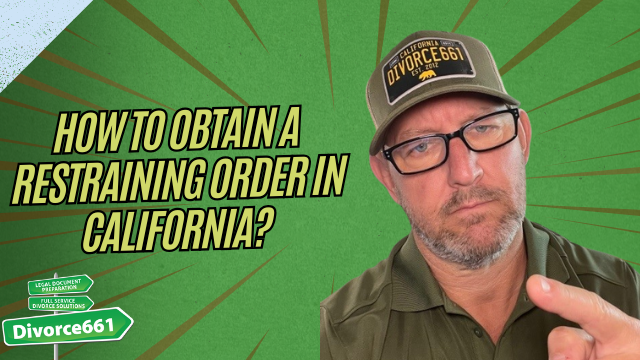How to Obtain a Restraining Order in California? | Los Angeles Divorce
Why a restraining order matters
A restraining order can be your shield against threats or harassment.
If you are being threatened, harassed, or harmed by someone you are in a close relationship with, California law provides a way to get immediate legal protection. Acting quickly can make a real difference for your safety and peace of mind.
Who qualifies for a domestic violence restraining order
California protects people in intimate or familial relationships. You may qualify if the person who harmed or threatened you is a:
- Spouse or former spouse
- Domestic partner or former domestic partner
- Person you are dating or used to date
- Close family member such as a parent, child, or sibling
How the process works
The basic steps to obtain a domestic violence restraining order are straightforward, but accuracy and preparation are crucial.
Step 1. File your request with the court
Start by filing the proper forms at your local family or superior court. Your request must explain specific incidents and include dates. Be as precise as possible.
Step 2. Prepare your declaration
Your declaration is a written statement to the judge describing the threats, harassment, or abuse you experienced. The declaration should include:
- Clear descriptions of what happened
- Exact or approximate dates and times
- Names of witnesses, if any
- Relevant evidence such as photos, texts, emails, voicemails, or police reports
Accuracy matters. The judge relies on what you put in this declaration when deciding whether to issue an order.
Step 3. Temporary orders and the hearing
A judge can issue a temporary restraining order quickly, sometimes the same day you file. This temporary order usually lasts about three weeks while the court schedules a hearing. At the hearing the judge will decide whether to issue a longer term order.
What to expect at the court hearing
Court hearings can feel intimidating, but preparation helps. Expect to:
- Present your declaration and any supporting evidence
- Answer the judge’s questions about the incidents
- Hear testimony from the other party if they appear
If the judge grants the restraining order at the hearing, it can last up to five years depending on the circumstances and the terms the judge sets.
Practical tips to strengthen your case
- Document every incident as soon as possible. Note dates, times, locations, and details.
- Save messages, screenshots, photos, and any physical evidence.
- Get police reports if law enforcement was involved.
- Identify witnesses who saw or heard the incidents.
- Practice your statement so you can explain the situation clearly at the hearing.
Real example of how preparation helps
We recently helped a client who was being harassed by an ex. Because we filed quickly, prepared a detailed declaration, and organized supporting evidence, the temporary order was issued and the restraining order was granted at the hearing. Preparation turned a stressful situation into real protection and peace of mind.
Professional help can make a difference
Navigating the court process and preparing a persuasive declaration can be complex. Professional assistance can help ensure your forms are filed correctly and that you are fully prepared for your hearing.
If you need help obtaining a restraining order in California, schedule a free consultation with Divorce661. Your safety is the priority and we will guide you through each step.

